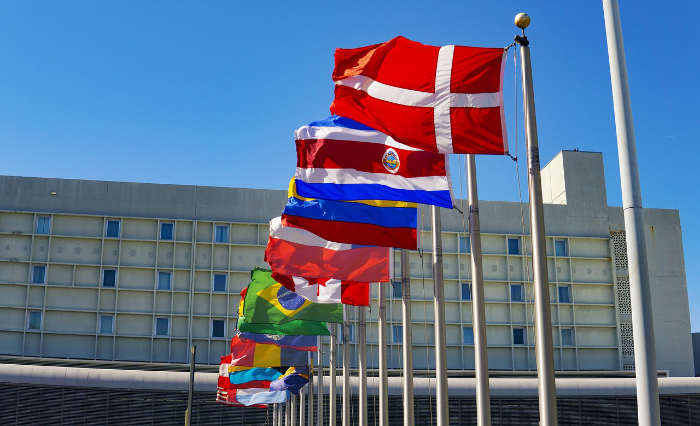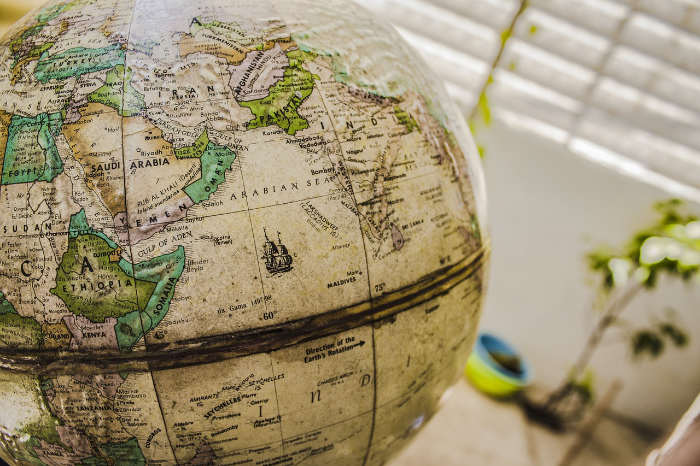Easiest Countries to Immigrate To 2025

25
30
35
40
45
50
55
60
- Higher scores are preferable in the Remitly Immigration Index.
- The Remitly Immigration Index 2025 ranks 82 countries based on how welcoming and accessible they are to immigrants. It uses 24 indicators across topics including quality of life, migrant acceptance, economic stability, infrastructure, and ease of settling in. Each country receives a score out of 100, reflecting its overall appeal to potential immigrants. The index offers a data-driven perspective on which countries offer the best conditions for starting a new life abroad.
- The 2024 Overall Rankings were determined from the point of view of a US citizen seeking to immigrate. Citizens of other countries may encounter different results. Wow Travel ranked the United States as the 7th easiest country to immigrate to, but because the composite rankings are tailored for US citizens looking to relocate, the US was left off the data table. Overall Rankings were determined by compiling the results of all sources shown, with additional sources consulted to resolve tied scores.
Immigration is the act of moving from one country to another. Every country has its own process for authorizing immigrants to become permanent residents. And immigration is quite difficult in some countries but notably easier in others. Prospective immigrants must typically meet a designated set of requirements, which typically include taking classes in history and/or government, learning the local language, passing proficiency tests in language and/or history, showing an offer of employment (or proof of employable skills), paying a processing fee, and/or renouncing citizenship in any other country.
No scientific or statistical method exists to determine the easiest or hardest countries to immigrate/emigrate to. Additionally, a destination that seems ideal for immigrants from one country may be less appealing to those coming from a country with a different location, climate, primary religion, or culture. With such concerns in mind, many experts in immigration, international law, and travel have created custom rankings of the best countries for emigrants to consider. These rankings typically cater to prospective emigrants wishing to relocate from the United States or United Kingdom. Several such lists have been compiled to establish the aggregate ranking below.
Top 10 Easiest Countries to Immigrate To (aggregated sources)
While the destination country’s immigration policies have the greatest influence when determining how difficult a country is to immigrate to, the country of origin plays a role as well. For instance, some countries love Americans more than others, so immigrants from the United States may be more or less welcome in a given host country than immigrants from Russia, South Korea, or Saudi Arabia. Also, though it is much less common, authoritarian countries such as North Korea often forbid their citizens from moving to another country, making legal immigration difficult. Finally, the immigrating person’s religion is occasionally a concern. For example, the Muslim majority country of Kuwait requires immigrants to be Muslims who have been practicing the faith for at least five years.
National Profiles of the 10 Easiest Countries to Immigrate To
Canada
Known for its vast natural beauty and remarkably polite population, the “Great White North” is one of the safest, most peaceful, happiest, and economically stable countries on Earth. It is also very welcoming to immigrants. English-speakers can acclimate with very little effort in most of the country’s ten provinces and three territories, and the government has established dozens of programs designed to enable newcomers to establish residency and eventually citizenship. The most popular is the Express Entry program, which streamlines the process for immigrants with in-demand career skills. Additional programs enable immigration for those who have a Canadian relative, a job offer in Canada, or a plan to invest at least $125,000 CAD to start or purchase a business.
Australia
Australia is appealing to prospective immigrants for a wealth of reasons: awe-inspiring natural beauty, high quality of life, and the easygoing friendliness of the Australian people. Its healthcare and education systems are excellent, the language of choice is English, and immigration is a simple process—especially for those with in-demand job skills. However, people in both Australia and New Zealand drive on the left side of the road instead of the right, which may be an adjustment for some Americans. Like the rest of the top five, Australia is one of the [countries that allow dual citizenship]/country-rankings/countries-that-allow-dual-citizenship, so an immigrant need not renounce their original nationality to become an Australian. The land down under is also divided into states just like the U.S.
Germany
According to the United Nations, Germany is home to more immigrants (nearly 16 million as of 2024) than any country in the world other than the United States. This is partly due to Germany’s willingness to take in political refugees from countries such as Turkey and Afghanistan, but it is also due to Germany’s thriving economy and low unemployment rates. To immigrate to Germany, a person must be financially stable, have health insurance, know basic German, and possess a visa when traveling from select countries.
New Zealand
This English-speaking South Pacific island nation offers many positives to prospective immigrants, including lush natural beauty, top-notch healthcare and educational systems, and high quality of life matched with a low cost of living. Like Canada and Australia, New Zealand offers many ways for an ex-pat to become a permanent legal resident, including indefinite work visas and—for those with at least $3,000,000 NZD (just over $2,000,000 USD) to spend—investment visas.
Portugal
Sunny and laid-back, Portugal offers a warm welcome to immigrants looking for a slower pace of life and a beautiful place to call home. English is widely spoken, especially in cities and tourist areas, and the country consistently ranks high for quality of life and affordability. Portugal’s popular Golden Visa program lets investors gain residency by buying property worth at least €500,000, while the D7 visa provides an option for retirees and remote workers with a steady income. After five years of legal residency, immigrants can apply for citizenship without giving up their original nationality, making Portugal a favorite among those seeking a fresh start abroad.
Thailand
With its vibrant culture, incredible beaches, and low cost of living, Thailand is a dream for many looking to start a new life abroad. The country’s immigration system makes it relatively easy to stay long-term, offering options like the Retirement Visa for those over 50 with a steady income, as well as business visas and the Thai Elite Visa for investors. Permanent residency is also possible, though it usually means holding a long-stay visa for at least three years and meeting some financial requirements. Despite a bit of paperwork, Thailand’s warm hospitality and easy-going lifestyle make it a welcoming place for people from all walks of life.
Finland
Finland’s natural beauty, progressive society, and high quality of life make it an attractive choice for anyone looking to put down new roots. Known for its clean air, safe communities, and top-notch education system, Finland consistently ranks as one of the happiest countries in the world. When it comes to immigration, Finland offers several straightforward pathways to residency. Those with a job offer in a field with a labor shortage can apply for a work-based residence permit, while entrepreneurs and students also have dedicated visa options. Permanent residency is available after four years of continuous residence, and Finnish citizenship can be applied for after five years. While learning the language can be a challenge, Finland’s welcoming atmosphere and strong social services make the journey worthwhile.
Singapore
Singapore’s dynamic economy, modern infrastructure, and multicultural vibe make it a top choice for those looking to build a life in Asia. Known for its excellent healthcare, safety, and vibrant food scene, Singapore blends the best of East and West. For immigrants, the country offers several paths to residency. Employment passes are the most common route, designed for skilled professionals with job offers in Singapore, while entrepreneurs can apply through the EntrePass scheme. Permanent residency is competitive but attainable, typically after several years of work, and citizenship is an option after a period of continuous residence. Despite the paperwork, Singapore’s efficiency and quality of life make it a highly sought-after place to call home.
Paraguay
Paraguay’s low cost of living, laid-back lifestyle, and welcoming people make it an appealing option for anyone seeking a simpler, more relaxed life abroad. This landlocked South American country offers immigrants an accessible pathway to permanent residency through its popular “permanent residency by deposit” program, which requires showing proof of funds (typically around $5,000 USD) deposited in a local bank. This makes Paraguay one of the easiest places in the world to gain residency. While Spanish is the official language, the country’s small expat community is growing, and newcomers appreciate the friendly atmosphere and easygoing pace of life. For many, Paraguay’s charm lies in its warm hospitality and the chance to slow down and enjoy life.
Mexico
One of the world’s hardest-working countries, the United States’ neighbor to the south boasts 31 states of its own, which come complete with a growing economy, low cost of living, high quality of life, and excellent healthcare (and cuisine). The process of becoming a permanent resident is fairly simple, and after five years—or fewer for those whose spouse or relatives are Mexican—one can apply to become a citizen. Other Latino countries considered easy immigration destinations include Panama, Ecuador, and Argentina.
Sources
- The Immigration Index - Remitly
- Citizenship - CIA World Factbook
- The top 10 easiest countries to immigrate to as an expat - Expatica
- Easiest Countries to Get a Permanent Residency - VisaGuide
- 15 Easiest English-Speaking Countries to Immigrate to from US 2024 - Yahoo/InsiderMonkey
- 9 Easiest Opportunities to Immigrate to for Better Opportunities - TripZilla
- 13 Easiest Countries to Immigrate to - WowTravel
- Easiest Countries to Move to in 2022 - Where Can I Live
- Easiest Countries to Immigrate - Passport Legacy
- Easiest Countries to Immigrate to - Global Citizen Solutions
























